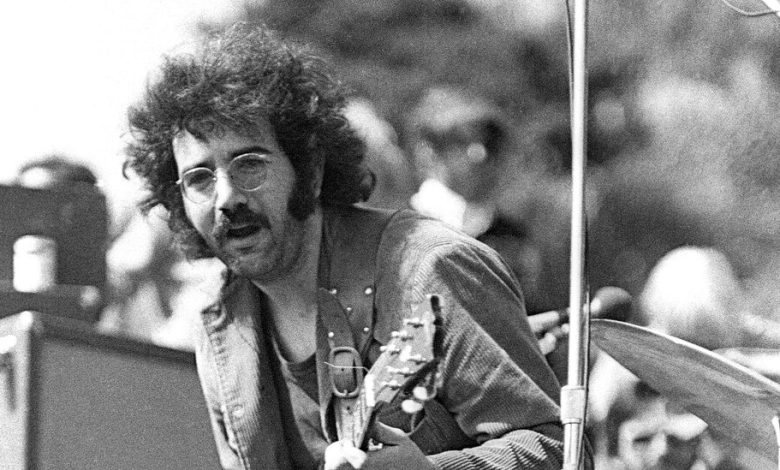Excavating Jerry Garcia’s Crucial Bluegrass Roots

Just off the lobby of the Bluegrass Music Hall of Fame & Museum is the “picking room” — a cozy, glass-enclosed corner where visitors are encouraged to grab any of the guitars, banjos and fiddles hanging on the wood-paneled walls and play. Located on the Ohio River 35 miles northwest of Rosine, the small farming community that produced the bluegrass pioneer Bill Monroe, the museum’s readily available instruments and neighborly spirit are no surprise.
What is unexpected? The 1961 Chevy Corvair sticking out of a wall upstairs in the museum’s main hall and the newly unveiled exhibit it anchors: an in-depth look at the Grateful Dead guitarist Jerry Garcia’s long and often intense love affair with bluegrass music.
Best known as the standard-bearer for San Francisco’s psychedelic sound and the house band for Ken Kesey’s storied Acid Tests, Grateful Dead concerts were not a big draw in the beating red heart of bluegrass country. Of the more than 3,500 shows Garcia played with the Dead and his own bands, only seven were in Kentucky. But the subsequent emergence of the “jamgrass” scene — a bluegrass cousin to the bands who take a cue from the Dead in emphasizing extended improvisations — is one of the ways that time and a widening appreciation have proved the Dead to be one of the most American of bands. It’s also given Garcia a new kind of cultural heft and near-mythological status, 28 years after his death.
Musicians and listeners alike have long singled out “Old & in the Way,” a 1975 LP from one of Garcia’s side projects, as the gateway recording that introduced them to bluegrass. But much of “Jerry Garcia — A Bluegrass Journey,” the imaginative and carefully curated show that recently began a two-year run at the museum, is built around an intriguing and less well-known event in Garcia’s career: Before forming the Grateful Dead, he aspired to a career as a bluegrass musician and undertook a 1964 cross-country musical pilgrimage, largely in the hope of landing a job as Monroe’s banjo player.
“I’ve been with the museum for 13 years and an exhibit on Jerry Garcia has always been on the back burner,” said its curator, Carly Smith. Those discussions were pushed to the forefront when the museum moved in 2018 to a new 64,000-square-foot home that enhanced its ability to present detailed exhibits and includes superb indoor and outdoor performance spaces. Though the pandemic necessitated a two-year delay, the show is an ambitious bid to highlight a little-known connection and build bridges between genres and audiences. Mounted with the cooperation of Garcia’s family, it includes a dozen of his instruments, numerous clippings, artifacts and mementos and a well-researched narrative of Garcia’s formative years on the Bay Area’s folk scene.
